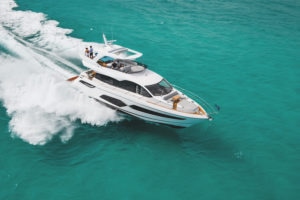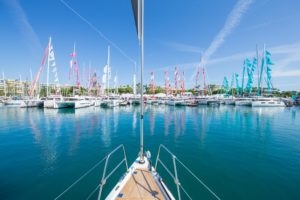Spirit Yachts unveils flagship P70 motor yacht
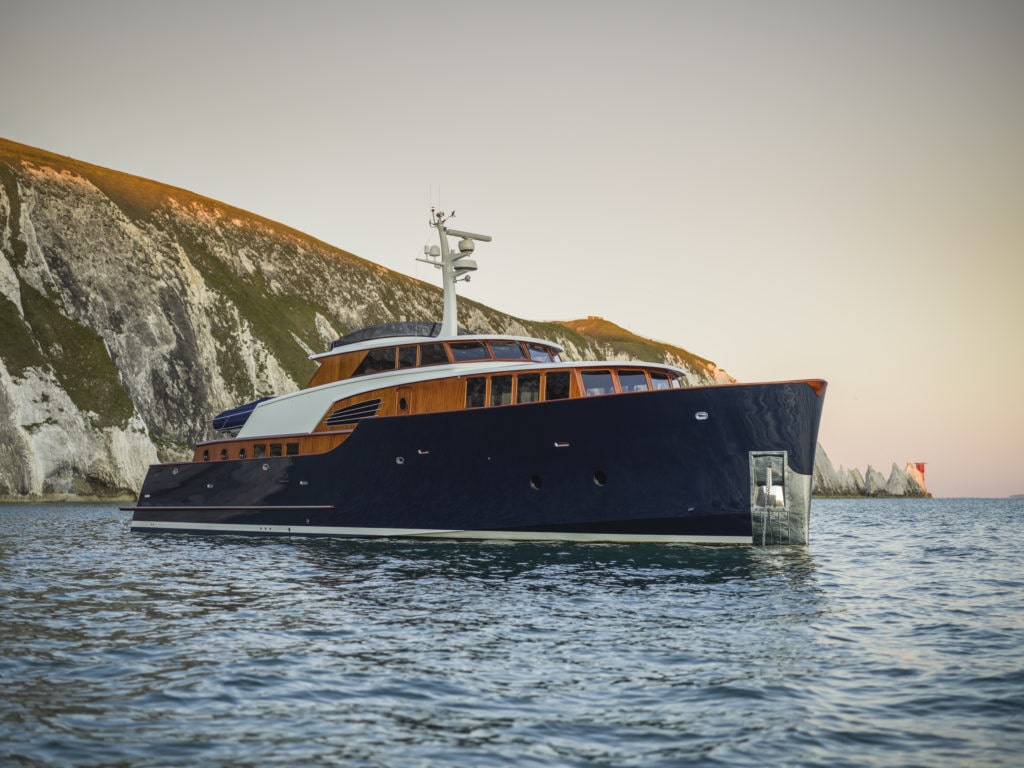
Following last month’s handover of the Spirit 111 sailing superyacht, Spirit Yachts has unveiled its largest modern classic motor yacht to date: the Spirit P70.
The 21.7m P70 was designed and built by Spirit Yachts for an experienced motor yacht customer who requested an owner-driven yacht capable of cruising 1,000nm at an average of 18 knots across the North Sea without having to refuel.
“The launch of the P70 represents a significant step forward for the Spirit Yachts power range. Whilst the company’s core business remains sailing yachts, we are seeing increasing demand for larger motor yachts tailored to suit an owner’s cruising plans,” says Spirit Yachts managing director Nigel Stuart. “We are responding to that demand by investing in innovation and expertise devoted to delivering beautiful modern classic motor yachts that perform on the water.”
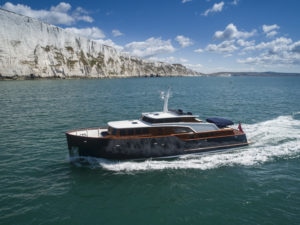 The design of the yacht took into account the owner’s itinerary and preferences. Spirit Yachts founder and chief designer Sean McMillan explains: “The owner will keep the P70 in the UK and cruise to Scandinavia in the summer, so the yacht had to be capable of undertaking long passages in comfort but aesthetically stay true to Spirit’s timeless style and classical elegance. He liked the design of our existing motor yachts, so we combined the flared bow and tumblehome stern from the P40 with the 1930s-style of our sailing yachts and applied it to a larger design. We added deep bulwarks to allow guests to move around the decks safely, particularly when underway out at sea.”
The design of the yacht took into account the owner’s itinerary and preferences. Spirit Yachts founder and chief designer Sean McMillan explains: “The owner will keep the P70 in the UK and cruise to Scandinavia in the summer, so the yacht had to be capable of undertaking long passages in comfort but aesthetically stay true to Spirit’s timeless style and classical elegance. He liked the design of our existing motor yachts, so we combined the flared bow and tumblehome stern from the P40 with the 1930s-style of our sailing yachts and applied it to a larger design. We added deep bulwarks to allow guests to move around the decks safely, particularly when underway out at sea.”
Constructed using sapele ring frames to which Douglas fir longitudinal strips were bonded, the P70 build followed the same core processes of Spirit’s sailing yacht hulls. Once the initial structure was complete, diagonal layers of kaya wood planking were laid down, sanded and vacuum infused with a thin layer of epoxy resin. This lightweight method of construction means that at 24tonnes (light) the P70 is almost half the weight of its GRP counterparts. Twin MAN i6 800hp engines generate a cruising speed of 18 knots and a maximum of 25 knots.
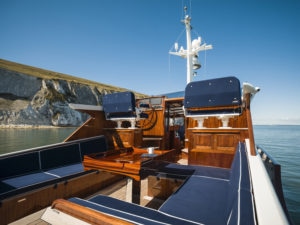 Stuart adds: “The owner is very knowledgeable when it comes to motor yacht engineering and he was keen to keep noise and maintenance to a minimum. He requested Seatorque oil-filled BOSS shafts, which are mounted to the hull structure using low noise fittings. The connection to the propulsion engine is flexible in order to reduce shaft-line noise and vibrations. The yacht has an easy-access, spacious engine room and a lithium-ion battery bank in the stern that will power the air conditioning and Sleipner curved fin stabilisers overnight without having to run the generator.”
Stuart adds: “The owner is very knowledgeable when it comes to motor yacht engineering and he was keen to keep noise and maintenance to a minimum. He requested Seatorque oil-filled BOSS shafts, which are mounted to the hull structure using low noise fittings. The connection to the propulsion engine is flexible in order to reduce shaft-line noise and vibrations. The yacht has an easy-access, spacious engine room and a lithium-ion battery bank in the stern that will power the air conditioning and Sleipner curved fin stabilisers overnight without having to run the generator.”
On the top deck of the P70 is a flybridge with two double Stidd helm seats and additional seating for six guests. A hydraulic operated 750kg crane is included for up to a 3.7m rib.
The wheelhouse sits midships on the main deck and has double and single Stidd seats located in front of the navigational equipment and engine controls. An additional raised sofa is to port, with a chart table and stowage to starboard. A few steps down and forward of the wheelhouse is the main saloon, complete with a ‘rise and fall’ TV, a bar and panoramic views from the forward windows.
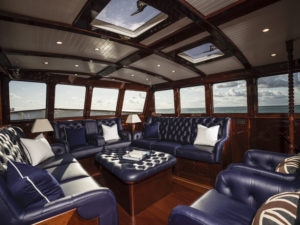 The lower deck houses the accommodation and living area. Stairs from the main saloon lead down to a forward ensuite owner’s cabin, complete with a bath, and an ensuite single cabin, which doubles up as an office.
The lower deck houses the accommodation and living area. Stairs from the main saloon lead down to a forward ensuite owner’s cabin, complete with a bath, and an ensuite single cabin, which doubles up as an office.
A separate stair case down from the wheelhouse provides access to the open plan dining saloon and galley. The saloon dining table has a U-shaped port side sofa, with additional seating to starboard, wine storage and a TV. The well-equipped galley includes an American style fridge-freezer with built in ice-maker, below floor chest fridge, dishwasher, twin sinks, four burner induction hob, a fan oven and a microwave. Aft of the dining area are two twin guest cabins, which share a head and shower.

